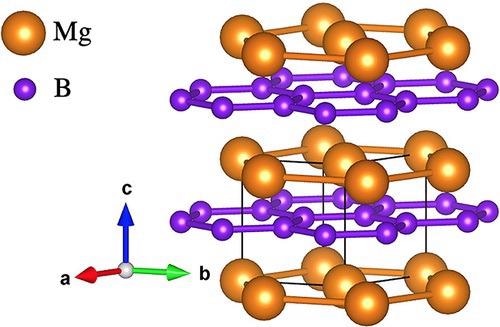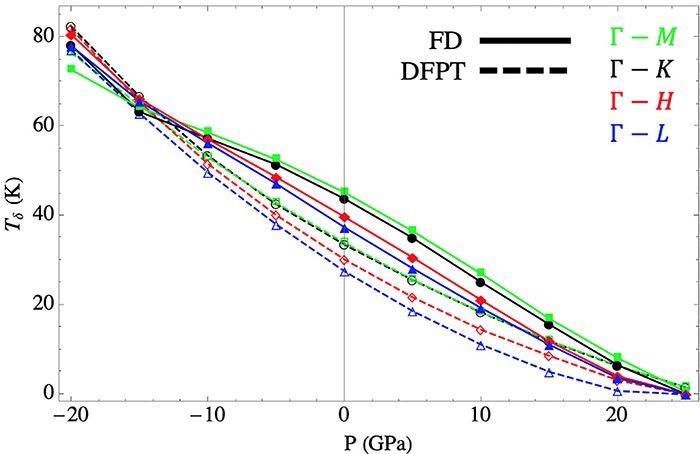 By Surbhi JainReviewed by Susha Cheriyedath, M.Sc.Mar 25 2022
By Surbhi JainReviewed by Susha Cheriyedath, M.Sc.Mar 25 2022In an article recently published in the Journal of Applied Physics, researchers investigated the influence of strain and pressure on the superconductivity and electron-phonon coupling in magnesium diboride (MgB2). They also discussed the corresponding theoretical approaches and the future of nanostructure design.

Study: The effect of strain and pressure on the electron-phonon coupling and superconductivity in MgB2—Benchmark of theoretical methodologies and outlook for nanostructure design. Image Credit: Gorodenkoff/Shutterstock.com
Background
The discovery of MgB2 as a high-temperature superconductor with a superconducting transition temperature (Tc) = 39 K led to a flurry of experimental and theoretical studies on the compound's various properties. Understanding superconductivity requires knowledge of both the phonon and electrical band structures. Inelastic X-ray scattering measurements of phonon band structure reveal Kohn anomalies. The depths of the Kohn anomalies can be directly linked to the superconducting transition temperature, according to theoretical investigations.

The hexagonal unit cell of MgB2. Each unit cell consists of one magnesium atom (orange) and two boron atoms (purple). Image Credit: Johansson, E et al., Journal of Applied Physics
More research is needed, however, to compare approaches for predicting Tc based on the Kohn anomaly strength to estimate the electron-phonon coupling (EPC). The impact of positive hydrostatic pressure suppresses Tc in MgB2. Anisotropic strain's effect on MgB2 superconductivity has also been studied experimentally and theoretically. The Migdal–Éliashberg formalism of superconductivity is known to perform well in calculating the transition of superconductivity in MgB2, in both anisotropic and isotropic approximations, under ambient circumstances.
About the Study
In this study, the authors investigated the effect of hydrostatic pressure, strain, and anisotropic tension on the Tc of MgB2 by using a variety of theoretical approaches. This was accomplished by looking at Kohn anomalies in phonon dispersions alone, as well as by calculating the electron-phonon coupling explicitly. An alternative method was offered via co-deposition using ternary diborides that thermodynamically avoided mixing with MgB2. This method encouraged columnar growth, which caused a strain in all directions.
The researchers compared alternative methods for predicting the Tc of MgB2 under hydrostatic pressure, as well as anisotropic stress and strain. On the optical E2g branch, the first method was based on the pressure-derived evolution of the Kohn anomaly and phonon dispersions. The discrepancies in the detected Kohn anomalies along Γ–q (q = K, M, H, L) across the procedures were quantified. Phonons obtained from both finite displacements and linear response methods were compared. The Migdal–Éliashberg formalism was used to calculate EPC as a function of pressure. Tc was calculated by using both isotropic and anisotropic approximations.
The team utilized two approaches to determine electronic and phonon characteristics in MgB2 from first-principles computations. Two phonon-based finite displacement and linear response approaches were used to characterize the response of Kohn anomaly in the optical E2g branch to the in-plane stretching modes of the B–B bond. The Kohn anomaly approach calculated Tc by utilizing finite displacements at ambient pressure when averaged across all directions. A 5 x 5 (a, c) grid was used to investigate the lattice parameter space around the MB2 (M = V, Ti, Hf, Zr, Y) candidates.

Directional and pressure dependence of thermal energy Tδ that correlates with superconducting transition temperature Tc, calculated using FD and DFPT. Image Credit: Johansson, E et al., Journal of Applied Physics
Observations
Tc was suppressed by increasing pressure in all situations, whereas superconductivity was enhanced by isotropic and anisotropic strain. Under compressive load, the corresponding Kohn anomaly depth decreased, while under tensile strain, it increased. It was observed that with an increase in Tc, negative pressure increased, and with an increase in the compressing of the lattice, the Kohn anomaly was completely suppressed.
In the range, 60–80 meV (at ambient pressure), visualizing the phonon dispersion ωvq widened by the phonon linewidth γνq provided evidence of EPC in the E2g branch along Γ–q (q = A, K, M, H, L). The anomalous phonon frequency stiffened, and the overall electron-phonon coupling decreased as pressure was increased, which effectively limited superconductivity in MgB2.
When Tc was boosted to 38.7 K, the pressure trend closely resembled the bulk of experimental reference values. Tc was enhanced by compressive and tensile strain. Because they were projected to have clustering tendencies in comparison to MgB2, the metal diborides MB2 (M = V, Ti, Hf, Zr, Y) were highlighted as possible candidates for smart nanostructure design. It was observed that uniaxial out-of-plane tensile strain, biaxial in-plane tensile strain, or their combination significantly increased Tc.

Electron–phonon properties of MgB2 derived using QE. (a) Phonon density of states F(ω). Dashed lines show contributions from Mg and solid lines from B atoms. (b) Solid lines show Éliashberg spectral function α2F(ω) at different pressures, ranging from −20 to 25 GPa in steps of 5 GPa. Dashed lines correspond to the cumulative mass enhancement parameter λ(ω) that once becoming a straight flat line as the spectral function dies out reveals the total electron–phonon coupling value λ. Image Credit: Johansson, E et al., Journal of Applied Physics
Conclusions
In conclusion, this study elucidated that both HfB2 and ZrB2 are potential candidates for acquiring tensile strain in smartly constructed 3D interconnected coherent columns or nanostructures that are strained in both c and a. It was observed that the highest amount of tensile strain would be possible with YB2, but the dynamical stability of MgB2 at those lattice parameters is yet to be determined. The authors emphasized that future research should include a thorough examination of the impacts of quaternary diboride nanostructures and their alloys.
They also believe that the findings of this study will encourage the use of this technology to examine the pressure behavior of additional materials systems with anomalous phonon branches.
Disclaimer: The views expressed here are those of the author expressed in their private capacity and do not necessarily represent the views of AZoM.com Limited T/A AZoNetwork the owner and operator of this website. This disclaimer forms part of the Terms and conditions of use of this website.
Source:
Johansson, E., Tasnádi, F., Ektarawong, A., et al. The effect of strain and pressure on the electron-phonon coupling and superconductivity in MgB2—Benchmark of theoretical methodologies and outlook for nanostructure design. Journal of Applied Physics 131, 063902 (2022). https://aip.scitation.org/doi/10.1063/5.0078765